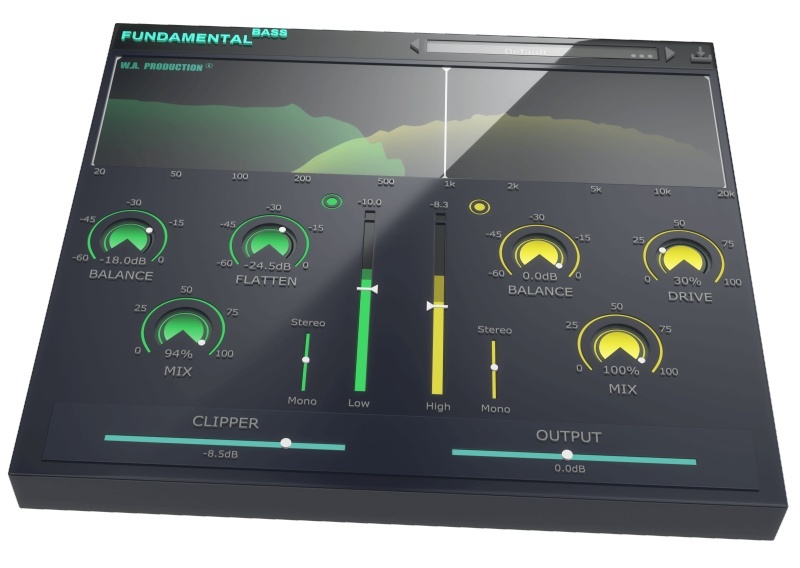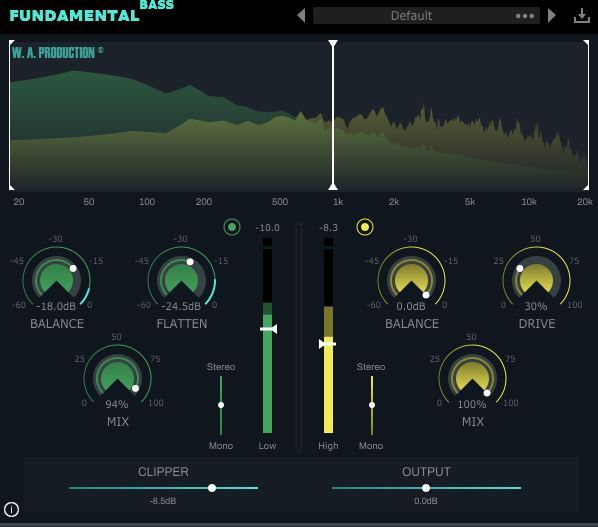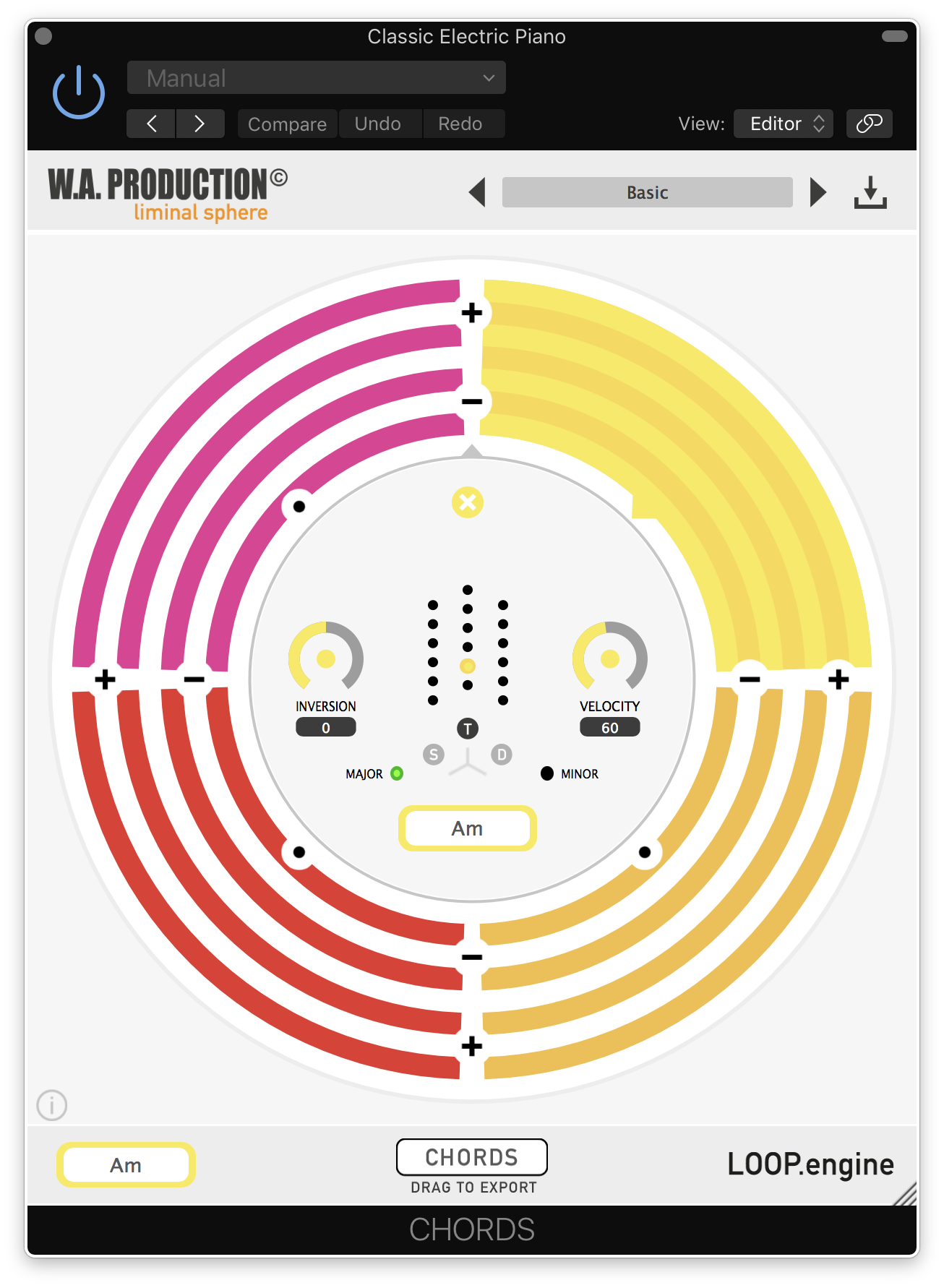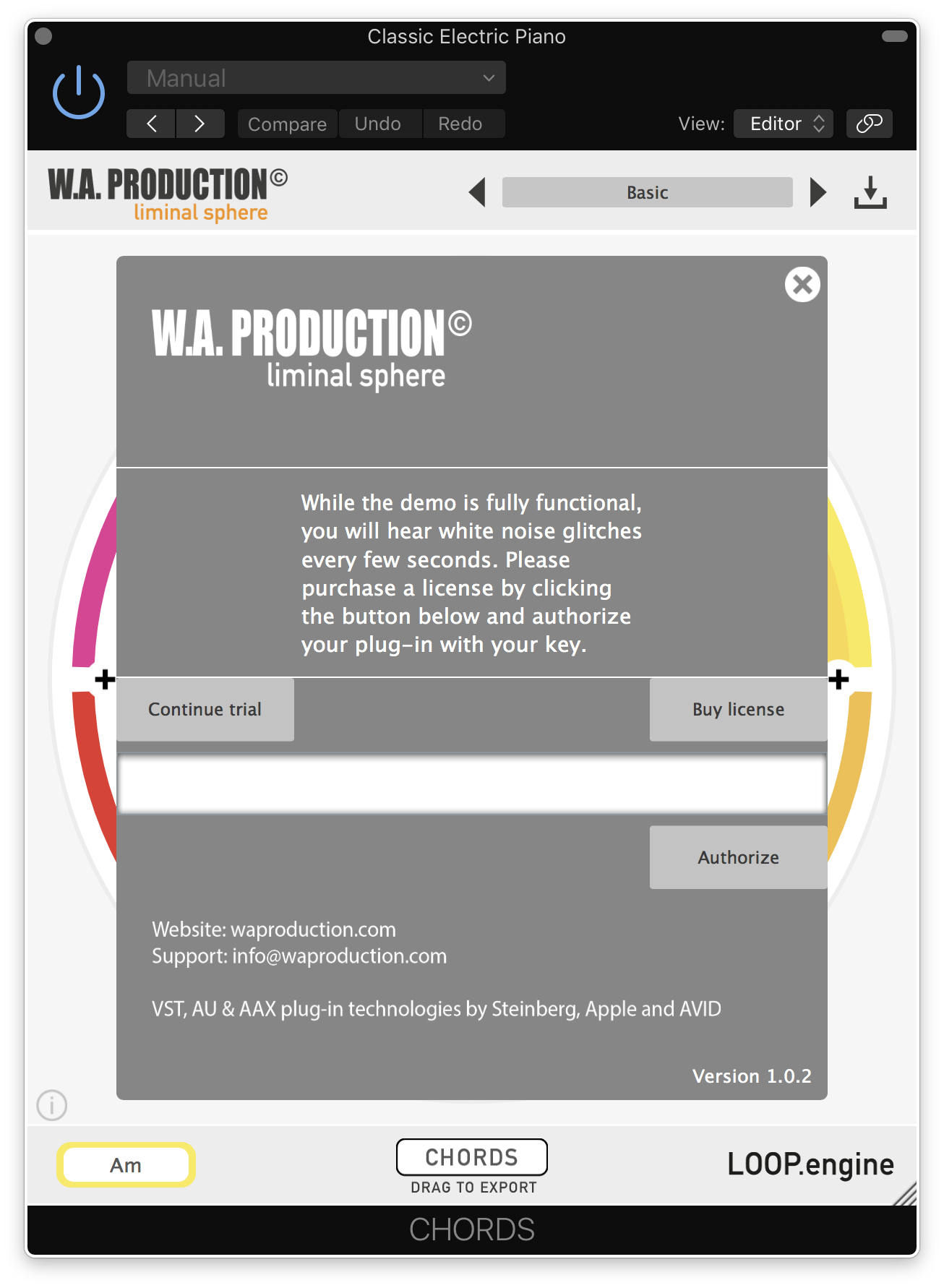Buy Fundamental Bass, get a free gift with purchase:
Get Low
As a famous vocalist once sang, “It’s all about the bass” and in as far as most genres of music are concerned, she’d be correct! Bassline balancing has always been a big challenge for producers, especially at the mixing stage, as the dynamic range of low-end material can be huge. If you leave bass lines as they are, then they’ll threaten to unbalance the rest of your mix, but apply compression too liberally and a lively bass sound will have the life sucked out of it. So what to do?
That’s where Fundamental Bass comes in, giving you a quick way to tighten up the dynamics of your low end whilst keeping the snap and sparkle of mids and highs. The processing is achieved with an adjustable frequency split which feeds to two separate modules for processing. The low band features twin-compressors and imaging adjustment for clarity and mono compatibility. The high band compresses and adds grit, enhancing natural harmonics whilst keeping the bounce of the bass.
With a clutch of useful parameters and a comprehensive range of presets, all you need to worry about is where to set the frequency split for maximum dance floor destruction.
Low & High-Frequency Split
The main concept behind Fundamental Bass is in the way it splits audio into high and low modules for independent processing. This way of mixing bass ensures that the low end is smoothly compressed without losing the excitement of mid and high-frequency dynamics. Green (low) and yellow (high) coloured modules make it easy to see which range you’re adjusting, and each has separate on/off buttons, gain sliders and mix ratio dials.
Low Module
The Balance dial sets a compression level with up to -60dB attenuation. Make-up gain is automatically applied. The Flatten dial is a more aggressive compressor, used for evening out the dynamics of really bouncy bass lines or acoustic material with a wide dynamic range. Experiment with these two compression types to control your bass whilst still maintaining the groove.
High Module
Use the Balance dial to introduce gentle compression and the Drive dial to add a little (or a lot) of grit to the sound. You get tube-style saturation at low levels and full-on distortion when pushed harder. Careful tweaking of this control can add sparkling top-end to bass lines whilst keeping the low end clean and clear.
High & Low Pass Filters
Manoeuvre your bass line out of the way of your kick with the high pass filter handle - simply drag to determine a lower frequency limit and your kick and bass separation will sound much clearer. You can also ditch troublesome high frequencies that might be conflicting with other instruments. Just use the low pass filter handle to set a limit.
Split-stereo Imaging
An age-old producer trick is to collapse bass lines to mono. This ensures that they will mesh with the kick more effectively and better translate to a wider range of playback systems. Fundamental Bass can perform this trick easily, with independent stereo imaging sliders for the low and high modules. Set the low module to mono and high module to stereo to maintain the lively top end whilst centering any wandering low frequencies.
Mix & Balance
With independent gain controls for both the high and low modules, plus mix ratio dials for parallel processing, you can use Fundamental Bass for either subtle changes or powerfully expressive makeovers. The master clipper smooths out the dynamics of the outgoing audio and the output level slider allows you to set an accurate level for accurate A/Bing with the pop-free bypass control.
Visual Feedback
The live frequency display towards the top of the interface shows exactly what’s happening to the signal as it’s being processed in real-time. Separate green and yellow meters correlate with the coloured high and low modules so you can visually monitor what’s happening each time you make a parameter change, with precision and accuracy.
Presets
With many included factory and artist presets, it’s easy to find the perfect starting point for your own bespoke bass tone. Tailored to specific bass characteristics and even other instruments, these factory options can be used to quickly cycle through parameter snapshots. The presets include everything from full-range bass compression, to frequency-specific transformations.
W.A. Production are real-life producers making creative plugins to help you achieve studio quality processing quickly and easily. Enjoy!
Features
- Frequency-split bass processing
- Independent compression & stereo imaging
- Tube-style saturation & distortion
- High and low-frequency filtering
- Visual feedback
- Responsive & CPU friendly
- Factory presets
- Full PDF Manual & Tutorial video
- Resizable user interface
System Requirements
Mac
- macOS 10.13 and later (64-bit only)
- VST, AU, AAX
Windows
- Windows 8 or later (32 / 64-bit)
- VST, AAX
Please Note: The AAX format of this plugin requires Pro Tools 11 or higher.
Important Note for Mac Apple Silicon users: Before purchasing, please review the current compatibility status of this plugin on your system here.
Registration and Activation Video
Please Note: CHORDS is used as an example.
Registration
1. Click the Download button in your Plugin Boutique account or go to https://www.waproduction.com/users/login
2. Click 'Create New Account' (if you already have a W.A Production account, enter your details, log in and skip to step 5).

3. Enter your details > Choose your marketing preferences > Click 'Finish Registration'.

4. Your account has been registered > Click 'Register Plugin'.

5. On the license registration page, enter the license key from your Plugin Boutique account (which will be referred to as 'serial number' on our site) > Click 'Add'.

6. Your product will now be displayed in your W.A Production account > Scroll down to My Orders and click 'View Order'.

7. Click 'Download Files'.

8. Click 'Download'.

Mac Installation
1. Once the download is complete, extract and open the ZIP folder you just downloaded > Open the Mac folder > Double-click the CHORDS .pkg installer file.
2. Click 'Continue'.
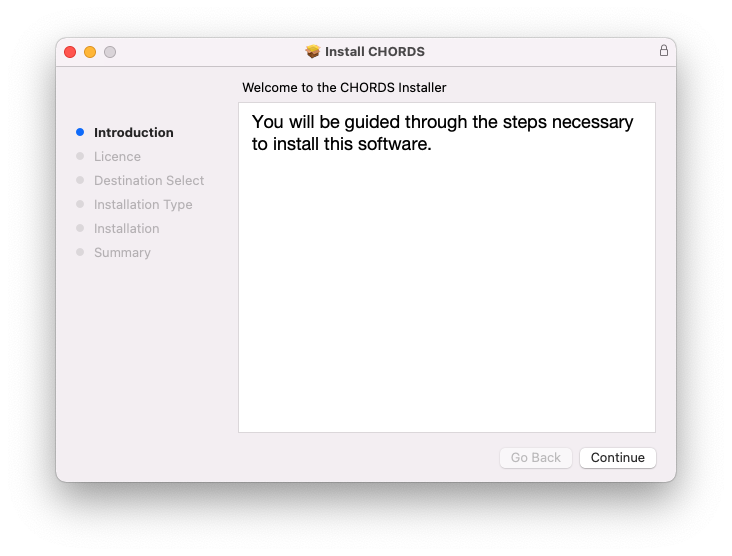
3. Read the Software License Agreement > Click 'Continue'.
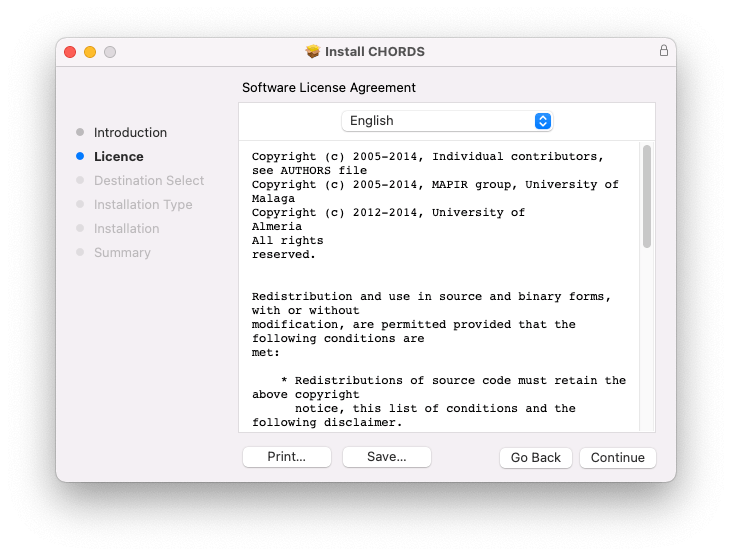
4. Click 'Agree'.
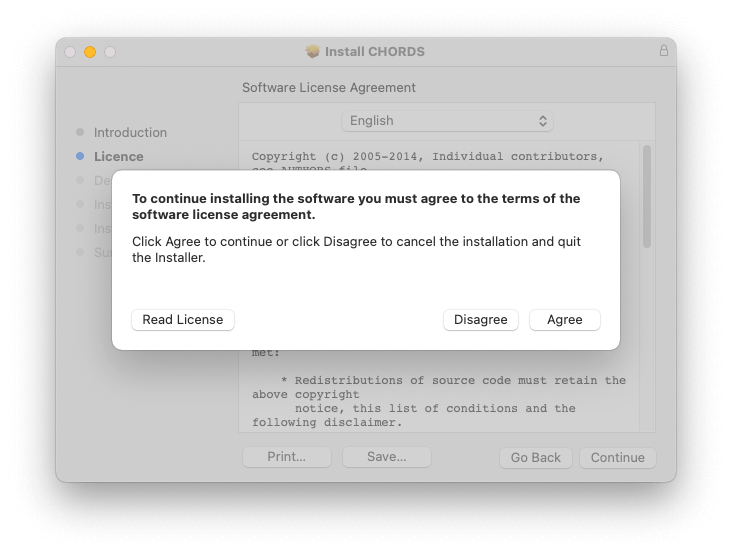
5. Click 'Install'.
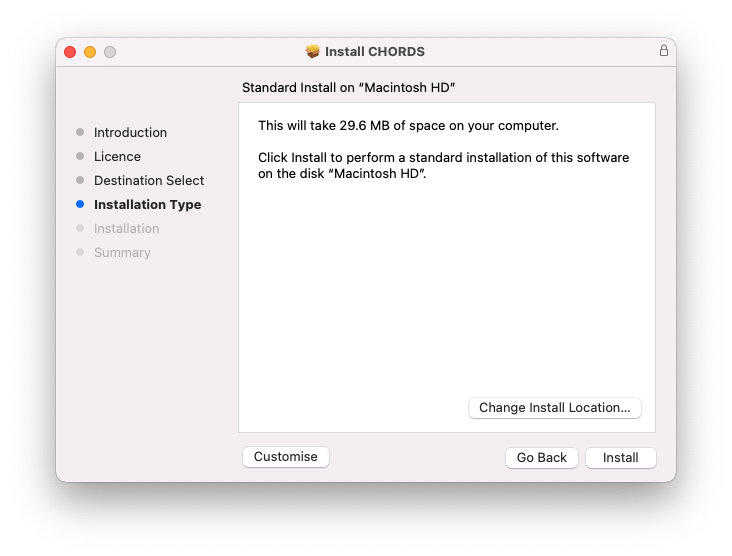
6. Click 'Close'.
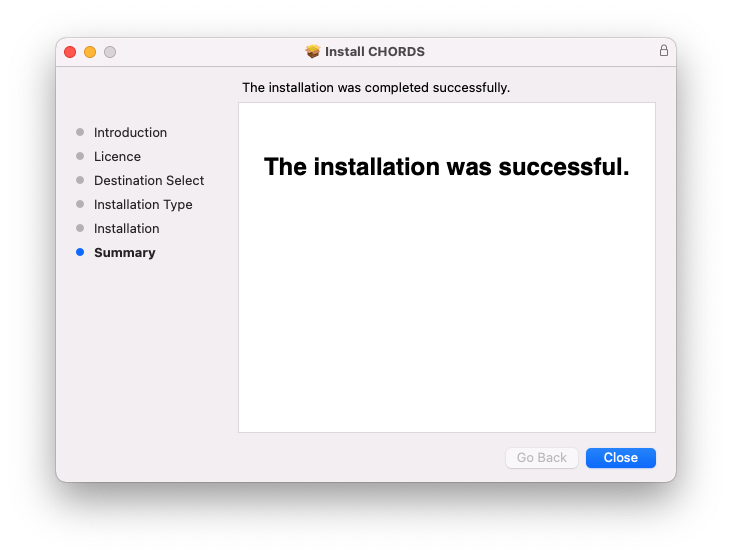
7. Open CHORDS in your DAW.
8. Click the information icon in the bottom left-hand corner > Enter the serial number you were given in your W.A Production account > Click 'Authorize'.
Your software is now ready to use in your DAW!
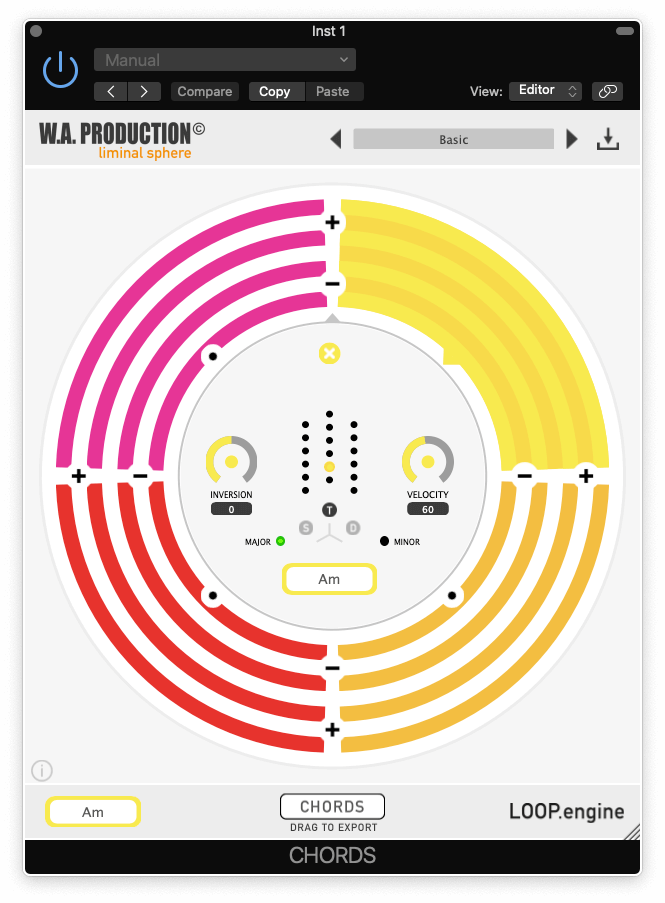
Windows Installation
1. Once the download is complete, extract and open the ZIP folder you just downloaded > Open the PC folder > Double-click the CHORDS PC installer file.
2. Click 'Next'.
3. Click 'Next'.
4. Select which plugin formats you would like to install > Click 'Next' > Click 'Install'.
5. Click 'Finish'.
6. Open CHORDS in your DAW.
7. Click the information icon in the bottom left-hand corner > Enter the serial number you were given in your W.A Production account > Click 'Authorize'.
Your software is now activated and ready to use in your DAW!


